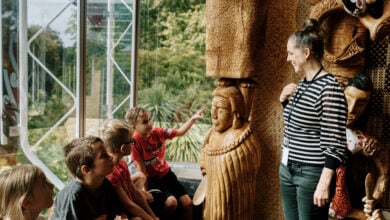Are we bullying the bullies?

 Finding out New Zealand leads the world in something can give us a bit of a thrill.
Finding out New Zealand leads the world in something can give us a bit of a thrill.
Our small country set apart once more, no doubt caused by our DIY attitude and strength of character. However, it feels a little uncomfortable to learn we can also top the world in areas we’d rather not be known for, including bullying.
A recent international survey found that New Zealand’s reported incidence of bullying is the second highest out of 40 countries surveyed.
This may be due, in part, to recent moves to remove the stigma of reporting incidences. However it will also resonate with many teachers who have observed an increase in harmful, and sometimes violent, interactions between students, often beginning in early childhood and carrying right through to secondary school.
Older research indicates that over half of all children are on the receiving end of some sort of bullying during their school years, with around 10 per cent of these reporting they are bullied on a regular basis.
Technology has played a large part in making bullying easier to do, and can be a more dangerous method as it increases the amount of potential contact between the person being bullied and the bully.
Martin Cocker from Netsafe says “It’s able to follow you around 24 hours a day so you can’t get into a safe and calm place. And text and online bullying targets students by socially isolating them – which is damaging for teens. It’s designed to make you feel you don’t have friends.”
Netsafe offer a free service to all schools to help manage strategies for the safe use of technology in the classroom. “We’re not a general bullying line – but can advise on technical complexities, how to remove things from different websites and help schools understand the legal side,” explains Cocker.
Embracing the technology, but reducing the negative behaviour is a fine balance for many schools. “It’s important to recognise the technology is not the issue, it’s the behaviour,” he says.
Using technology to bully is unfortunately not the only area of growth – assaults with weapons at school are also continuing to grow. The physical safety of students and teachers is of paramount importance and physical violence can quickly escalate the issue into a police matter.
A mix of preventative and curative programmes may be the best solution to managing the behaviours that lead to bullying. Mike Williams, who has developed a programme called the Undercover Team Approach as part of his role as guidance counsellor at Edgewater College, say many of the year 10 students he works with will admit they have been bullied all their life. Stopping this pattern begins with raising the awareness of alternative behaviour to bullying, with such programmes as the Cool School Peer Mediation approach, provided by the Peace Foundation.
This is a prevention programme, designed to stop small issues becoming larger ones. “It’s a whole school approach. It only becomes effective if we have management, staff, and students on board and it becomes embedded in the school culture,” explains Caroline Ongleo, the programme director at the Peace Foundation.
One of the advantages of this programme is it can be used at all levels, with it’s introduction at the primary school level allowing teachers and students to potentially break a cycle of bullying behaviour before it becomes a habit. “Schools report that once they incorporate these anti bullying strategies, there is then reduced incidents of bullying,” says Ongleo.
If the problem becomes larger than one that works with straightforward mediation, then trying a more direct and intensive approach may be the solution.
Williams’ Undercover Team Approach works by collecting the bullies together with several teenagers that have been identified by their teachers as displaying positive leadership, and the person who has been bullied. The group are told they have been selected for their ability to troubleshoot and are presented with a problem – a read out statement of the bullying behaviour and the impact it’s had on the teenager bullied.
The team together work to find an acceptable outcome to resolve and end the situation, without the bullies having the finger pointed at them at any stage in the process.
“Students can change their behaviour without losing face,” says Williams.
“For many it’s a pattern of behaviour they know they are in, but feel trapped and don’t know how to break. This gives them the opportunity to reshape their framework of how they perceive themselves and move on.”
The process takes around two weeks and has a very high rate of success.
“Punishment just repeats the cycle. What we want is for bullies, and the people they are bullying, to rewrite the internal script they have inside them and break the pattern once and for all. A bully rarely understands just how destructive their behaviour is. We need to give them a reason to change, to ignite in them a desire to be kind to each other.”









